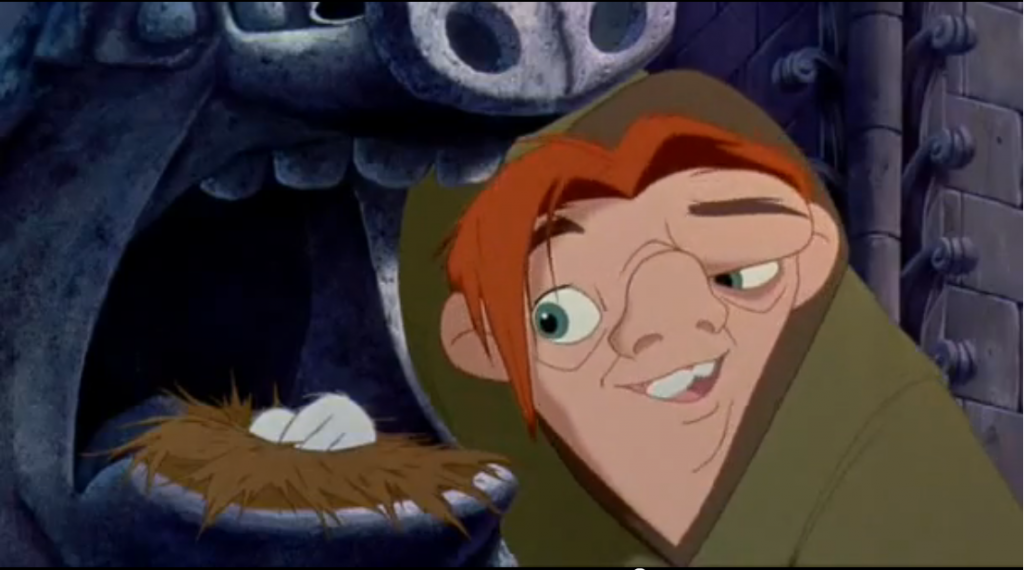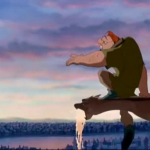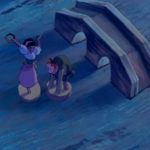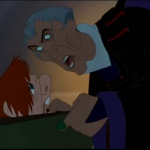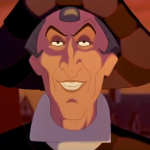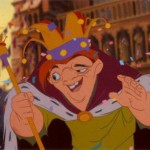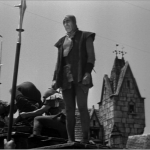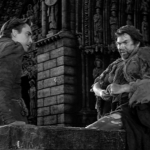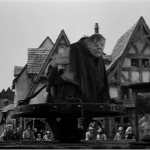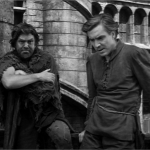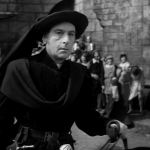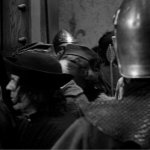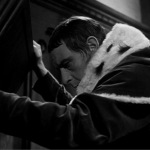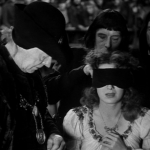So last time we looked at the Disney characters on a board level, now lets look at them on a deeper level.
Let’s start with the titular character: Quasimodo!
Quasimodo may be told he is ugly and monstrous but if we compare him to his book counterpart, he is on the cute side of the monster spectrum. He’s a hunchback and he is shorter than most of the other characters, but that’ not enough to make him an isolated monster. He has the over-the-eye protrusion that Hugo described but it does not impair his’ vision to the point of being a cyclopes. Instead Quasimodo has big, friendly doe eyes. He has a red full head of head hair and wears a green tunic. Two of the more uglier factors are his big stub nose and his teeth (large teeth in the front of his mouth).
Unlike Hugo’s version, Quasimodo is not deaf, he sings and talks a lot but it being a musical it would have been a challenge for the directors to have a deaf hero who has to sing (Disney movie from the 90s, heros must sing), so it understandable why Quasimodo is not deaf.
Quasimodo’s personality in the Disney movie is completely different from the book. In the book Quasimodo is morose and angry. At the beginning of the book he only loves Notre Dame, the bells, and Frollo. He’s not interested in being among the normal people of Paris nor is he forbidden from going out among them. Disney’s Quasimodo is forbidden from going outside and all he wants is to spend one day of his life among the normal people.
As the story progresses he falls in love with Esmeralda. In the Book, he falls in love with her after she shows a little kinds and pity by giving him water when he is on the pillory for trying to kidnap her because Frollo ordered him. That simple act was what did it for him, not her dancing or her looks. In Disney again Esmeralda shows him kindness but when he first meets her, she was kind to him and complimented his ugly mask (really his face) and Quasimodo likes the positive attention. He see her dance and he likes it.
When Quasimodo is being tortured by the crowd at the Festival of Fools, she does save him but he was already interested in her, but I guess maybe that sealed his “love for her”. The Disney Quasimodo’s love is more manifested as a school boy crush than a deep connection and I don’t believe he would crawl into vault and to die next to her rather than live without her.
It’s sweet that he believes that she could love him whereas in the book Quasimodo doesn’t believe it, even if he wishes he could. Quasimodo is mostly depicted as kind and gentle. He gets depressed but it never lasts too long. He’s also loyal which I think is the biggest similarity to Hugo’s original character.
Quasimodo is a dynamic character. He changes though the course of the movie, mainly in his attitude towards Frollo. At beginning he is nervous around Frollo even though he believes Frollo to be his defender. His nervousness around Frollo stems from Frollo’s abuse towards him. Frollo calls him ugly repeatedly and a monster. When Frollo comes to visits him, Frollo gets a silver goblet and plate while Quasimodo get a wooden goblet and plate. Frollo keeps him locked up in bell tower of Notre Dame while Frollo dwells elsewhere, you’d think the Palace of Justice would be a better place to lock one up forever, it being a jail instead a public building. I would like to point out in the book,
Frollo keeping Quasimodo at Notre Dame made sense as Frollo himself lived in the cloister as he was a priest, Quasimodo didn’t move to the Bell Tower till he was 14 years old. He moved there to be the bell-ringer because he loved the bells, not as punishment for his deformity or as method for absolution for Frollo. Quasimodo calls Frollo master but Frollo insists that he raised Quasimodo as his son. Quasimodo would probably be fairly well adjusted if it wasn’t for Frollo. Quasimodo then disobeys Frollo and goes to the Festival of Fools to fulfill his dream. He continues to disobey Frollo as he gains real human interacts with Esmeralda and Phoebus. At the end he stands up against Frollo and learns that people like Frollo are the cause for all the hate in world and once Frollo is dead he is finally accepted by the people.
Despite being in the Disney mold of hero/dreamer, Quasimodo is good character, he appeals the outsider in all of us. The film is good achiving it’s overall theme though Quasimodo despite being thrust upon the audience, but at least he is likable and grows as character.
Next time we’ll look at Frollo.

